Did you know that there are seven sea turtle species around the world and five of the species are found in Florida? One of the best places to see them is the veterinary turtle hospital that cares for sick and injured sea turtles in the Florida Keys. See our tips for visiting the turtle hospital.
The Florida Keys evoke sunshine, palm trees and beaches. But, we also did our share of some wildlife sightings. It was hard to pass up such an opportunity and experience. See what this unique place has to offer.
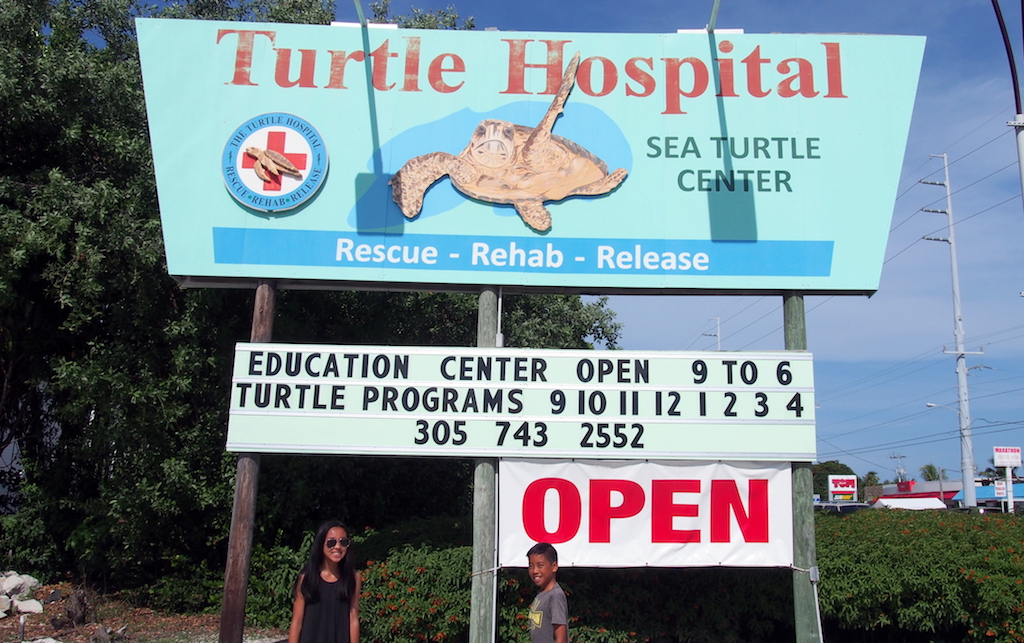
The Turtle Hospital first opened in 1986 and has maintained its motto of “Rescue, Rehab and Release”. They have cared for and released over 1500 sea turtles. The fully functional hospital is located in the buildings and grounds of the former Hidden Harbor Motel along prime beachfront property.
Touring the Turtle Hospital
They offer a 90-minute educational tour of its facilities and rehabilitation area plus many insights into the sea turtles. There’s also turtle feeding at the end of the tour.
We joined about 30 other people at the gift shop that also served as a small informational center before our designated tour time. Our guide first led us to a room to watch a short slideshow about the sea turtles and how many of the turtles ended up at the hospital.
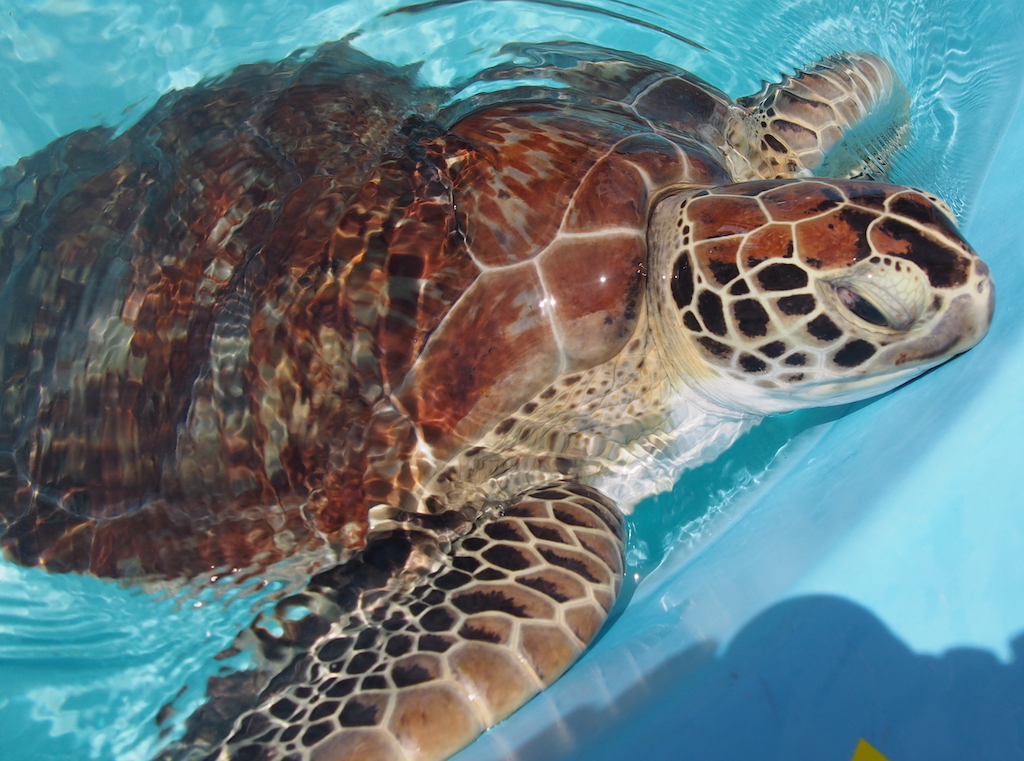
It was quite disturbing to see how many of our actions and activities as humans have put these turtles at the hospital. We learned that sea turtles eat almost anything they come across meaning they’re opportunistic feeders.
They also eat fishing hooks that were left behind. Unfortunately, this makes it hard for them to digest and break down unnatural and man-made materials ultimately causing an intestinal blockage called impaction.
Ingesting these items eventually lead to starvation or damage to their digestive system. We saw this photo of a small sample of trash that a turtle had ingested and the hospital had removed from its intestines. They treat turtles with impactions through a mixture of Metamucil, Beano, Fiber and Vegetable Oil.
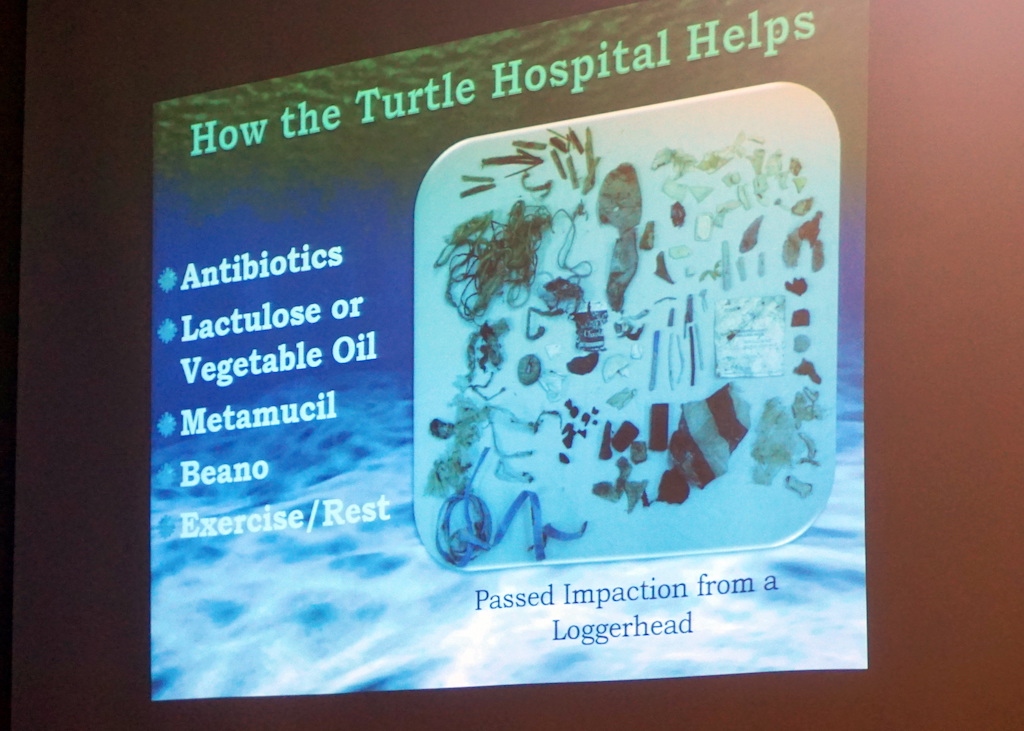
We also saw the effects of turtles getting caught in fishing and buoy lines. Turtles have drowned or lost flippers as a result. The fishing lines also affect other marine animals like dolphins, sharks and fish. It was heartbreaking to see turtles whose shells have been damaged from boat propellers or boat strikes.
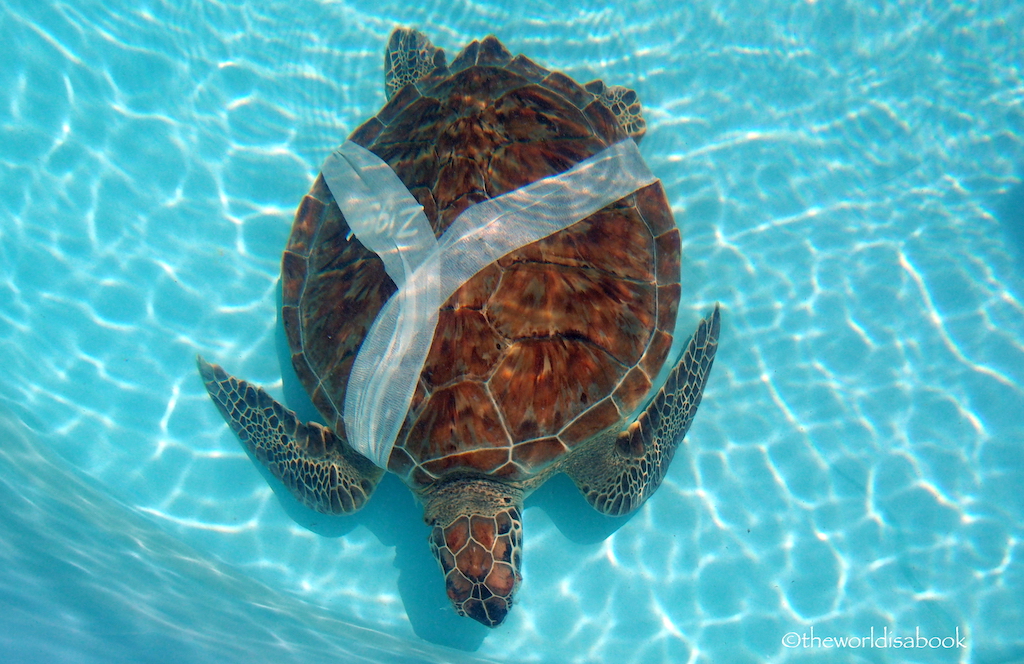
At times, turtles suffer from organ and nerve damages after being struck by a boat . The hospital has called this problem “Bubble Butt Syndrome” and has named one of their permanent residents, Bubble Butt.
Of course, my kids had a good chuckle with this one. Turtles with this syndrome become permanent residents since it will be difficult for them to live in the wild.
It was also sad to see green sea turtles suffering from fibropapillomatosis which is a virus resulting in tumors that affect their eyesight and movements. This makes it hard for them to survive in the wild.
There is no vaccine or cure for this virus. They remove the external tumors through surgery. Unfortunately, the cause and how the virus is transmitted is still a mystery. This also affects over half of the sea turtles.
The slideshow and the question and answer session that followed was very educational and enlightening. It was a wonderful orientation before touring the facilities.
Our tour continued through rooms where they perform various surgeries. Most of the equipment here was donated by organizations and hospitals.
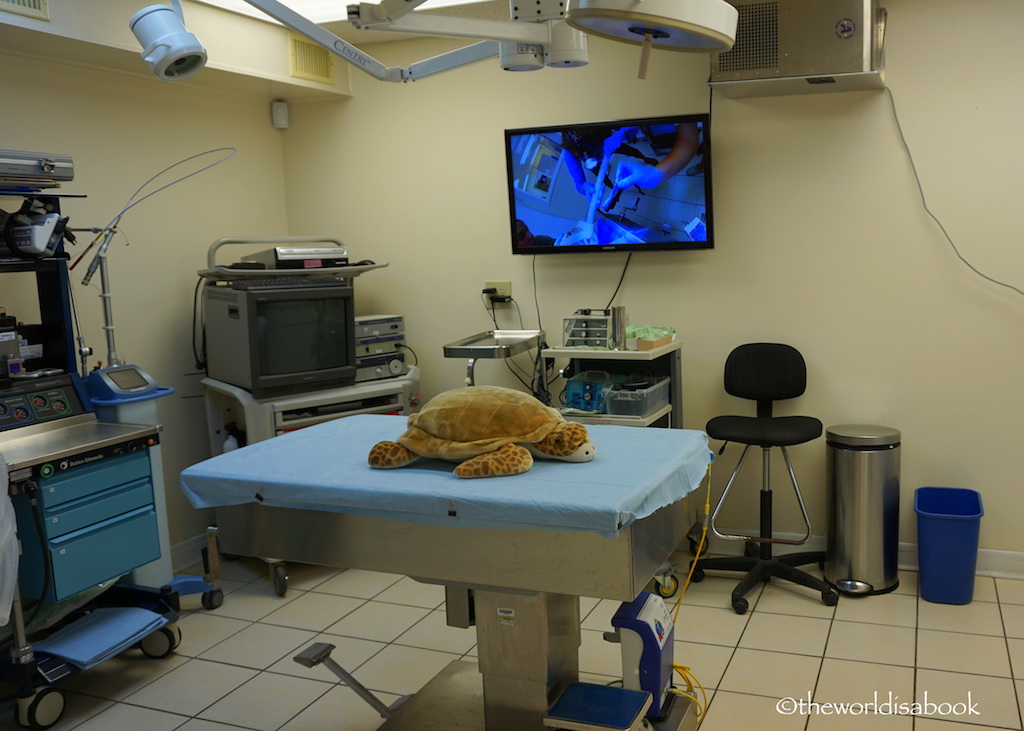
During our visit, they had about 56 turtles in the facility including 14 permanent residents. We first encountered the turtles in an area with two large tanks. Each turtle had their names written on their shells. This area was used as a sort of physical therapy for the turtles to emulate their swimming abilities after injuries in deeper water.
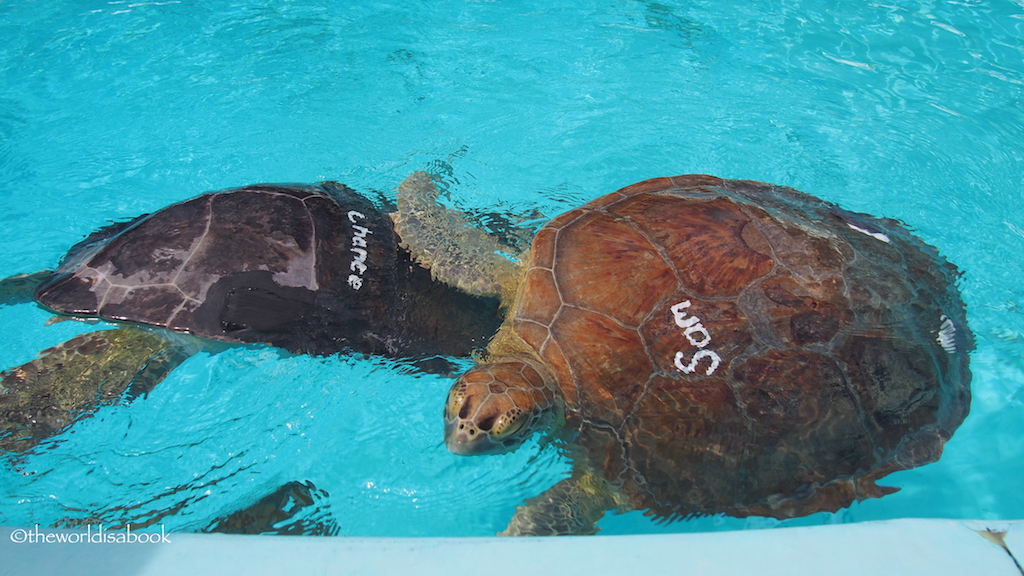
It was a joy to see many of the kids so excited to be quite close to the turtles. The turtles swam pretty close to all of us and seemed to love the attention. We learned some of the residents’ histories.
They told us that people (including kids) who had found or rescued the sea turtles had the privilege of naming them. This explained amusing names like Salty, Lumpy, Dirty, Smelly Cat, Hiccup and Captain Morgan.
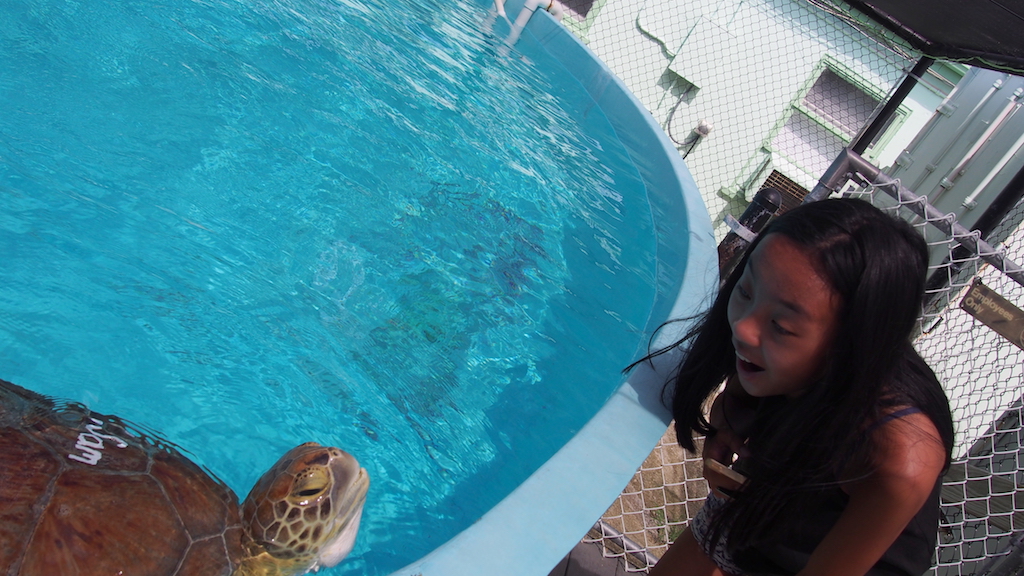
We also walked to an area that reminded us this used to be a motel. These rooms are sometimes used by researchers and staff too.
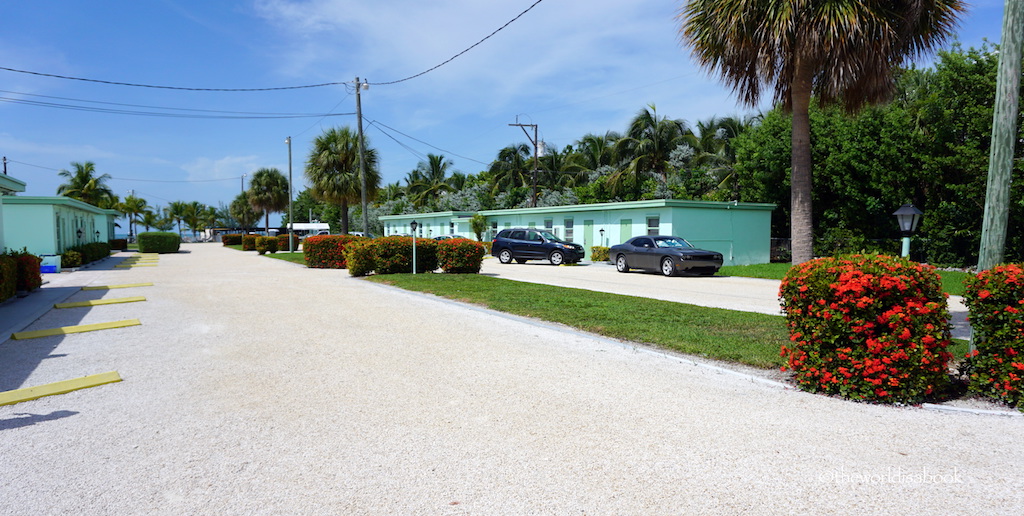
There was a small grassy area and had a lot of iguanas sunbathing. It was a surprising find.
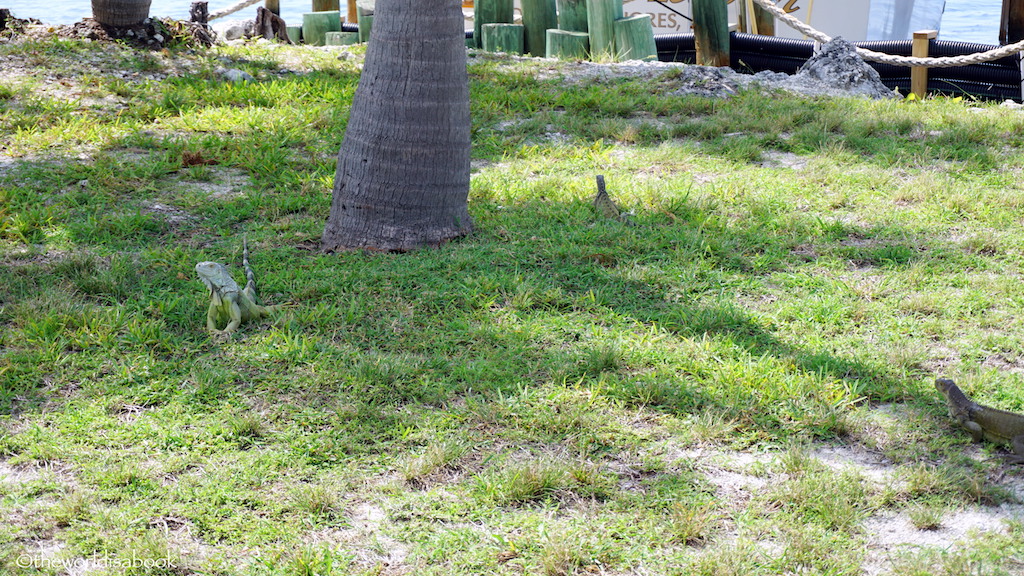
We entered an enclosure used as a rehab facility that had 23 individual tanks with two different sections. The turtles were in different recovery levels. The top part served more like an intensive care unit.
These tanks had turtles that were hit by boats or were tangled on fishing lines or suffered from impactions. The other section was for turtles with the fibropapilloma virus.
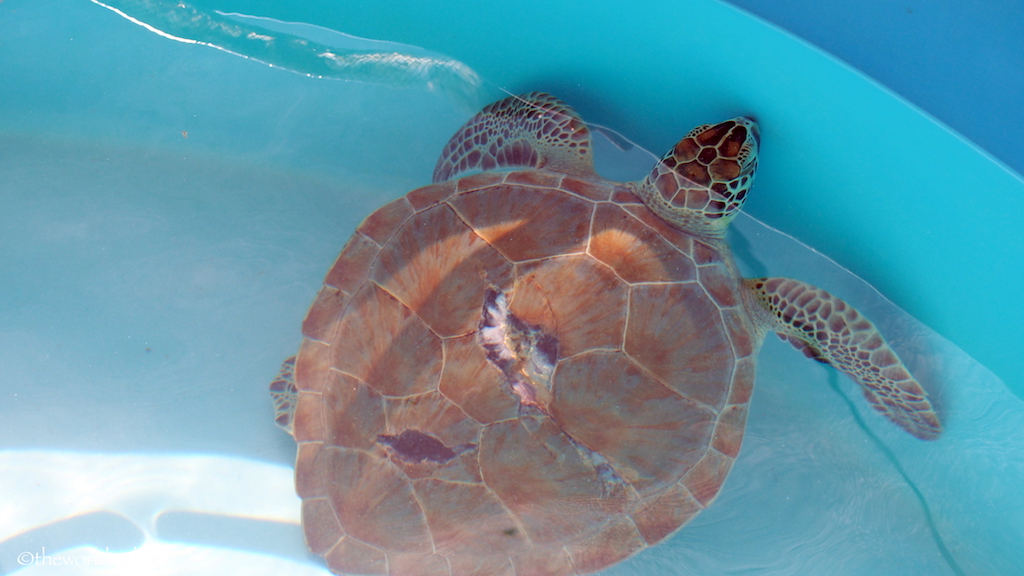
Nearby was the 100,000-gallon salt-water pool. What a great way to make use of the motel’s old pool! Many of the kids were so excited to see some tanks that had hatchlings in them on one area of the pool. The hospital gets over a hundred hatchlings during the summer for safe keeping purposes and away from predators.
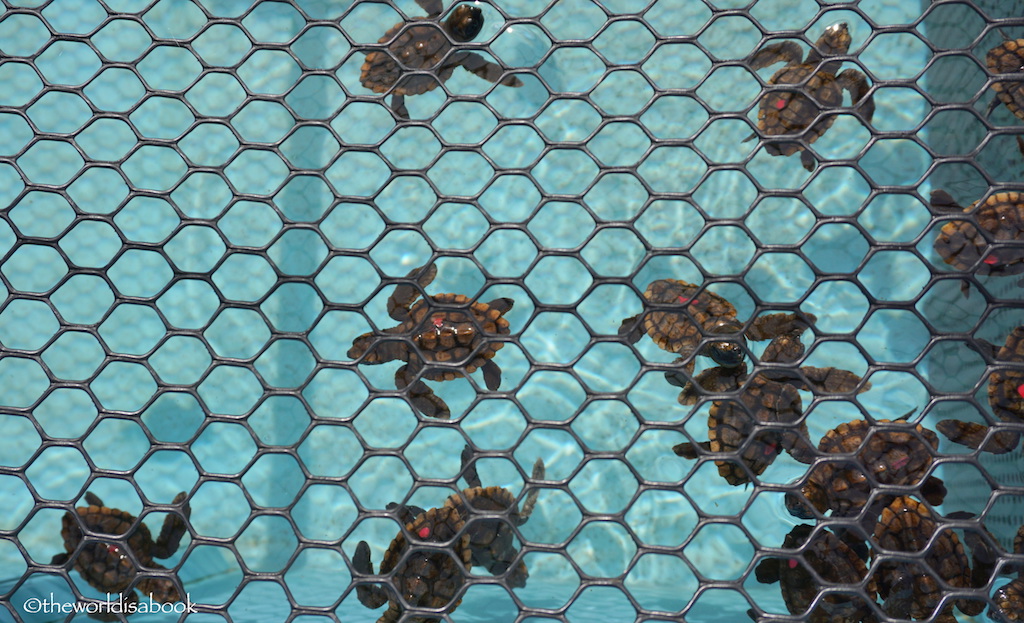
This pool is now the home to many of the hospital’s permanent residents. These are turtles with the bubble butt syndrome or have severe injuries that would make it hard for them to survive in the open ocean. While aquariums adopted some turtles, others ended up staying here permanently.
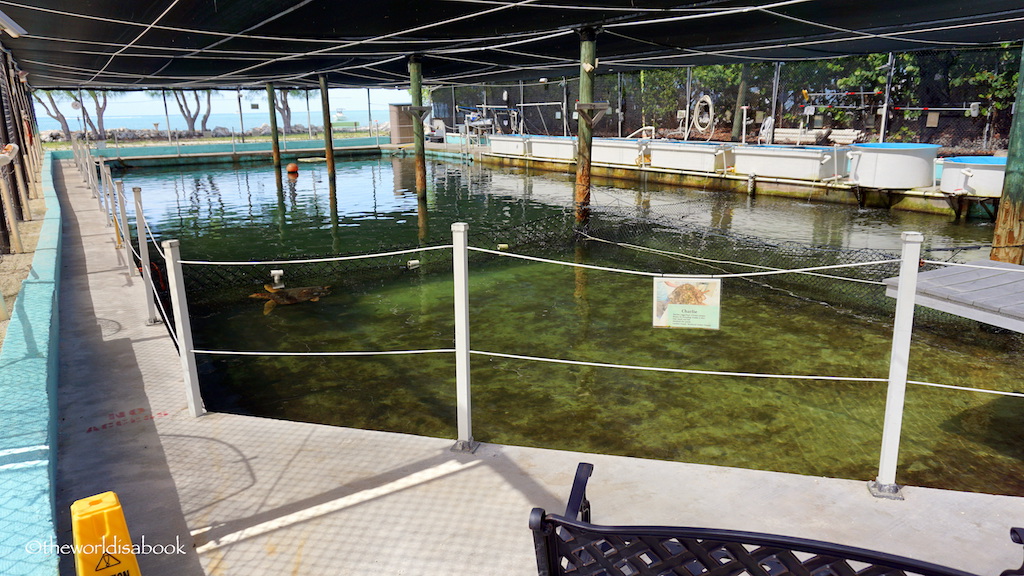
These turtles also loved the attention from the onlookers. They swam right up to us. The guide gave all of us food to throw in.
The food looked like puffed grain cereal. If you’re familiar with Kix cereal, they looked like that. It was so interesting to watch the turtles scrambled to get them.
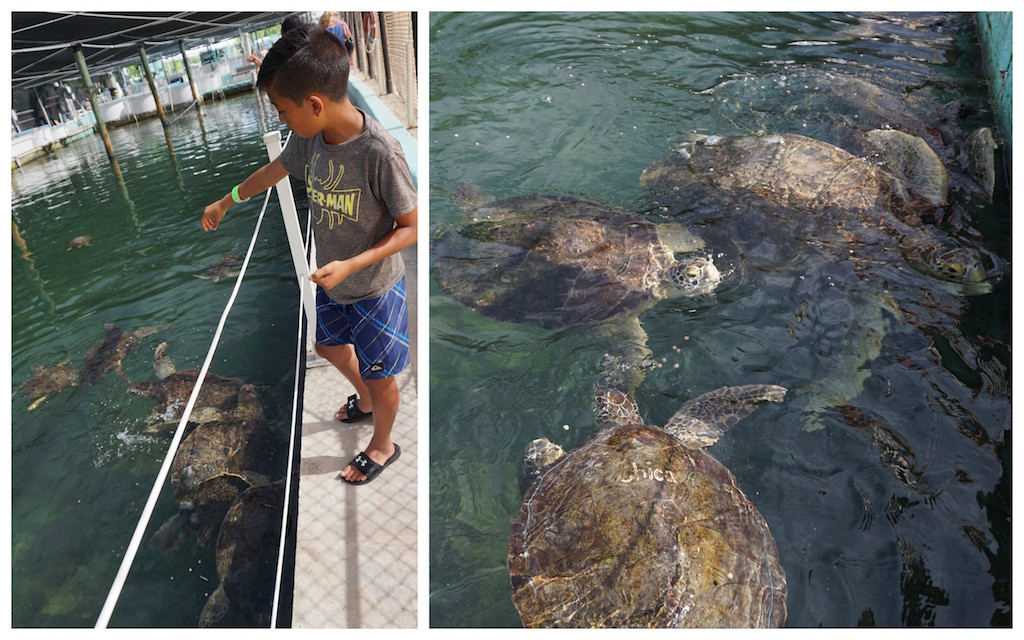
The Turtle Hospital was a wonderful place to interact with the sea turtles. It inspired us to be more aware of what we leave behind especially when we’re near the water. My kids were so engrossed in this visit and actually learned quite a bit.
The sea turtles are facing many challenges in today’s world and every awareness and action helps. It’s such a well-run and maintained facility. This is definitely worth a stop if you’re visiting the Florida Keys or on your way to Key West.
How to help the Sea Turtles
- There are many ways we can help the sea turtles no matter where you are in the world and it can start with some changes in our daily habits.
- Reduce, Reuse, Recycle. We saw first hand how trash and packaging, including plastic water bottles, have affected sea turtles when they ingest them. Be mindful of your trash especially when you are at beaches. Reuse and recycle as much as possible to cut down on waste.
- Do not leave fishing lines in the water. Use the available recycling bins to dispose them and many are available especially in the Florida Keys area. Marine creatures do get caught in them.
- When boating, check your speed and look out for floating or injured sea turtles.
- Donate your time and money to places like this turtle hospital or other animal rehabilitation centers. You can even adopt one of their permanent resident sea turtles.
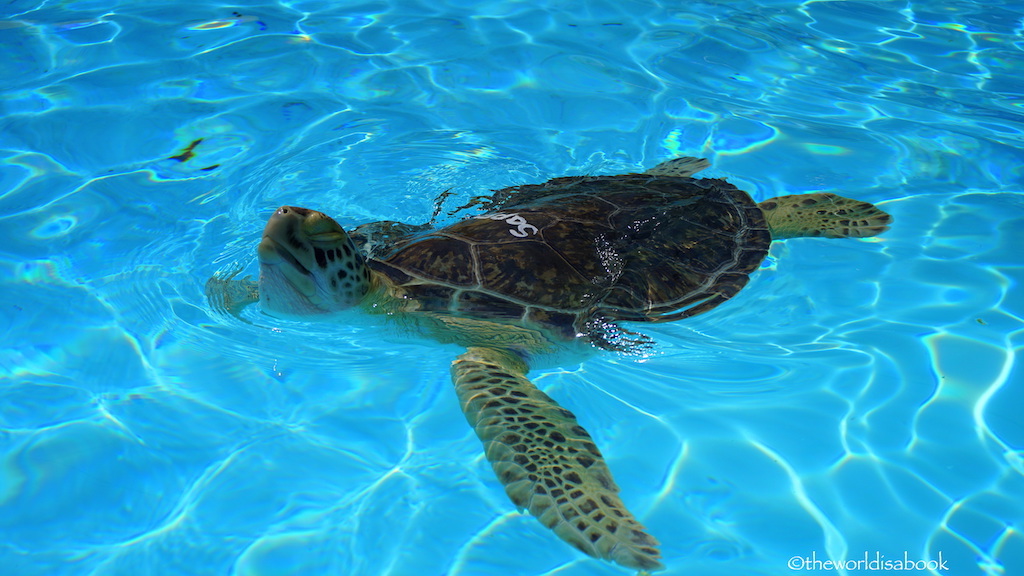
Tips for Visiting the Turtle Hospital Marathon
- The Turtle Hospital is located in Marathon, Florida. It is right off the Overseas highway at mile marker 48.5. It is about 50 miles from Key West.
- Ticket Prices (as of February 2019): Adult: $25.00; Children (4-12 years old): $12.00; Children under 4 are free.
- Guided educational programs/tours run at the top of the hour from 9 AM to 4 PM everyday and run for about 90 minutes. The hospital and gift shop are open daily from 9AM – 6 PM. We highly recommend making reservations to get your desired time. Please call (305) 743-2552.
- We were provided with cold water bottles once we reached the outdoor facilities.
- Fun fact: The five sea turtle species found in Florida are: Green, Loggerhead, Leatherback, Hawksbill, and Kemp’s Ridley.
- Visit their website for updated information on current patients. If you’re in the area, you may even see public releases of some turtles back into the wild.
*Have you visited the Turtle Hospital or a similar place?
PIN IT FOR LATER!
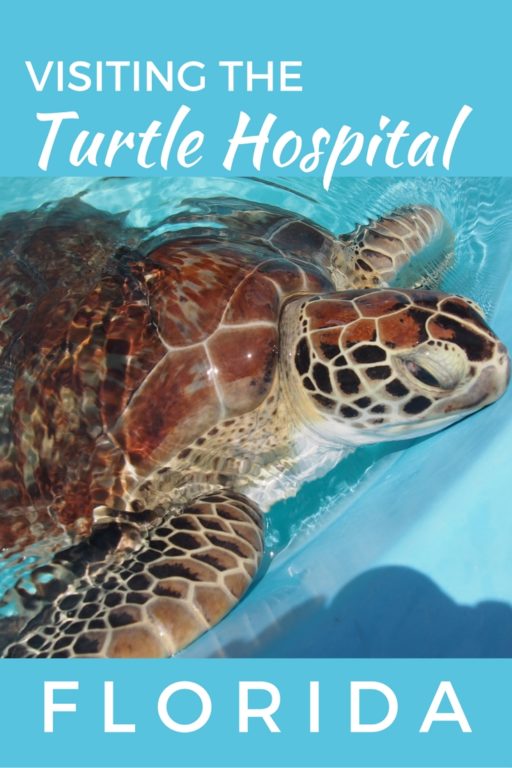
It is so sad to learn about all the problems these turtles go through. However, it is refreshing to know there is hope for them. This is a place I would like to visit one day.
It really is a great things that places like this exist to help the turtles survive.
This must have been so instructive for your children, Mary. I’m really glad to hear people are taking care of these issues the turtles have.
They loved this place, Anda. They were inspired to help the turtles more after this visit. :)
See turtles are just so beautiful. What an amazing place this hospital is. I would definitely include it on a visit to Florida. Thanks for joining us at #wkendtravelinspiration!
This would be a really interesting experience. I’m sure it opens a lot of eyes to what we do as humans to harm these beautiful animals. I know it would make me think a lot differently and try to do my part to protect them. #wkendtravelinspiration
It really was an enlightening experience of what our actions can do to these poor turtles.
I’ve been to the Keys many times and I never knew there was a sea turtle hospital. Looks like they’re doing great work – will have to visit it next time I’m there.
Awe poor turtles! Glad the hospital is there to care for them, but it is really sad that alot of the issues are caused by humans. Thanks for sharing on #TheWeeklyPostcard and bringing attention to the issue.
Aww, such cute creatures! How good of you to visit!!
Found you through #WeekendTravelInspiration
I have dived with the Green sea turtles and a Hawksbill turtle. It always breaks my heart how we as a species make others suffer. I am determined to do something about the amount of litter and plastic in our ocean and even though I haven’t figured out how to make an impact on the existing plastic masses floating in our ocean, I am reducing, recycling and reusing. I am not buying plastic bags for several years now and each time I go diving, I bring up bits and pieces that don’t belong to this environment. This whole post makes me so sad about the fact that we even need a hospital for these beautiful creatures. I saw a photo the other day of a comparison what a plastic bag looks under water and what a jellyfish looks like to a hungry turtle and they were identical.. :( Thanks for sharing this! I will stumble this for others to find and be more educated about how their choices affect others.
Thank you for sharing! We were told that issue with the plastic bags. It was really heartbreaking to see some of the injuries these turtles suffered. It really is a blessing to have this hospital to help them.
Great story. Looks like a good place to visit & get educated on the turtles.
I was able to visit the Turtle Hospital during a July visit to the Florida Keys and so glad I did! I am a huge turtle lover and advocate for these amazing creatures. This is a very thorough, imformative post!
Thanks Debbra! I’m glad you were able to visit this hospital too.
Mary, it sounds like this hospital is doing some incredibly important and rewarding work to help these beautiful creatures though it’s sad to see how many of the things that cause them harm are things that we as humans could take simple steps to avoid if they knew better so I think it’s great that you’re sharing information like this to help improve awareness. I do think it’s quite funny that they’ve named one of the turtles Bubble Butt though! 😀
I am happy to see that there is a facility like this to care for injured sea turtles. It would be nice if there were more of them spread around to the places where sea turtles nest and live.
What interesting and educational place to visit. Who can’t resist wanting to help the turtles.
I wonder what my kids would name a turtle if they had a chance. This is a much more interesting Turtle sanctuary than the one that was up the road from us in Malaysia. There, visitors could see a few hatchlings in tubs, but that was about it. This visit looks both fun and educational. Win-win!
This is really interesting – I’d never considered how turtles could so easily be injured and their shells broken from boat propellers and hits, but it’s obvious I suppose: heartbreaking to see that little fella with his shell all taped up! Humans are awful when you think about it. This place is doing such good work and it also looks like a cute day out. Lovely piece.